Camel Crickets
What are Camel Crickets?
What are these weird and creepy little things? Camel Crickets have a scientific name that is even harder to understand than their appearance, it is Rhaphidophoridae, and they are found in the suborder Ensifera. These creatures are distributed worldwide and are known by several names. Cave weta, camelback crickets, cave crickets, spider crickets, camel crickets, land shrimp, criders, sand treaders, and sprickets. Their names differ from one another and depend on the area they are found in. As many as 110 species are found in the Rhaphidophoridae family. You might end up confusing the camel crickets with field crickets. However, they are totally different and belong to a different superfamily. Read along to understand all about them.
Appearance and Size
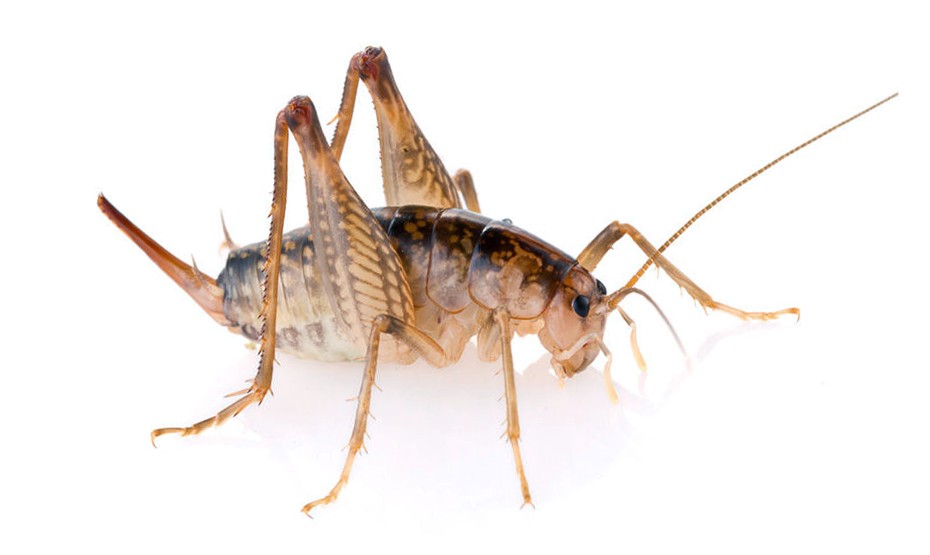
Picture of a Camel Cricket
Camel or cave crickets are a part of the cricket family, but they don’t look anything like the katydids or other true crickets. These crickets are mostly brownish or tan in color. They have derived the name camel or camelback cricket because of their hump that is present on their back. The antennae found on these crickets are really very long and so are their legs.
Camel crickets, because of their appearance and size, they can even appear like a spider from far, hence the name spider crickets. Camel crickets don’t have any wings, and that is why they don’t know how to fly. They grow somewhere between half an inch to one and a half inches. This is the size of an adult camel cricket. The young ones are even smaller in size. The camel crickets can’t chirp because they lack the auditory organs. It stands out from its cricket family by not producing any kind of sound. Sometimes, they end up producing a stridulatory peg. They are nocturnal by nature and have absolutely no fascination towards the light.
The cave crickets and other members of the Rhaphidophoridae love to live inside the caves, where it is moist and dark. They can also be found in the fallen logs and insides of hollow trees. However, if it is dry they will be attracted towards the inside of a house. Bathrooms and basements are their choice of location.
Habitat
By now you know they have several different names because they appear in different parts of the world, where they are identified by different names. Those that one finds in Tasmania, New Zealand and Australia are referred to as cave weta or jumping weta. Most of the Rhaphidophoridae family are found in caves, animal burrows, forests, under stones, cellars, and similar kind of environment. The group of Rhaphidophoridae that are called as sand traders are found in sand dunes. They get out during the night and spend their days deep inside buried in the sand.
What do Camel Crickets Eat?
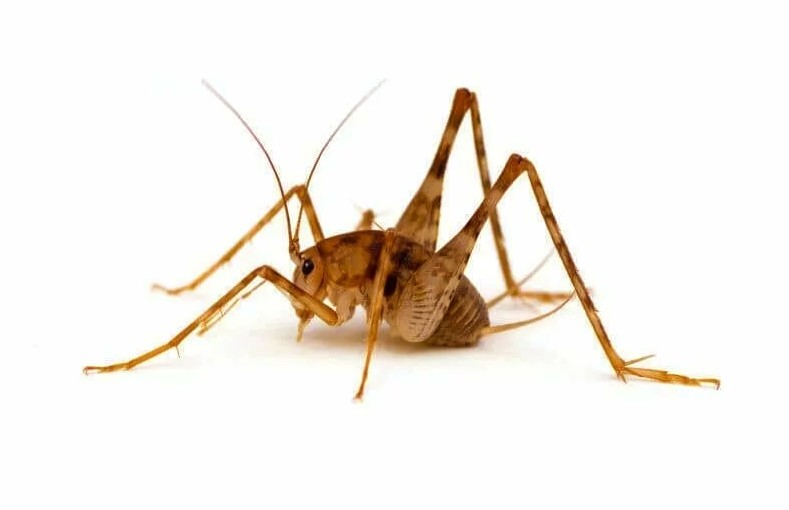 Yes, we agree with you one hundred percent that these crickets love to live in the darkness of the caves. In short, they will be found anywhere that is dark, damp, musty, and covered in algae. But, are there many caves left around? We don’t think so. During such times they love to hide in wood piles, basements, fallen trees, exterior logs, piles of newspaper, and other dark places. These little creatures are capable of eating anything at all. From carpets, fungi, and algae they don’t hesitate to consume anything. They are omnivores in nature. From dead animals, insects, plant material, and other things.
Yes, we agree with you one hundred percent that these crickets love to live in the darkness of the caves. In short, they will be found anywhere that is dark, damp, musty, and covered in algae. But, are there many caves left around? We don’t think so. During such times they love to hide in wood piles, basements, fallen trees, exterior logs, piles of newspaper, and other dark places. These little creatures are capable of eating anything at all. From carpets, fungi, and algae they don’t hesitate to consume anything. They are omnivores in nature. From dead animals, insects, plant material, and other things.
Why do Camel crickets jump at you?
These crickets are nothing but an annoyance to buildings and love to live in the damp and darkness of basements. They don’t invade your house on purpose. You can call it an accident on their part. It doesn’t matter if their eyesight is poor in the day or they lack wings; because they have the potential to jump. The cave crickets don’t bite or sting their predators. They have the power to jump a few feet. This is a way of self-defense that they practice to run away from their predators. If you are trying to get a good look at this little weird thing, then be sure it will jump on you. But, that is all they are capable of doing. They don’t bite or sting.
Signs of Infestation
In order to get rid of these little, ugly monsters you have to know whether or not you have them. They don’t produce any kind of sound which makes it really hard to understand whether they have made your basement their humble abode.
Camel crickets don’t produce any sound which is a relief in disguise. Imagine having to live in a house where the chirping of a camel cricket reverberates. You can sleep at night without having to wonder about the source of the sound. But, the downside is a scary insect that looks exactly like a monstrous spider can jump on you. Camel crickets eat anything in their vicinity which is harmful to your personal belongings. Your clothes, upholstery, tapestries, curtains, and furniture are some of the things they love to feed themselves on. An increase in camel crickets in your house will only lead to the destruction of property. If you know that they are in your home, it is time to take preventive steps to keep them in check. Contact the professionals from pest control today!
Pictures
Collection of Pictures of Camel crickets:
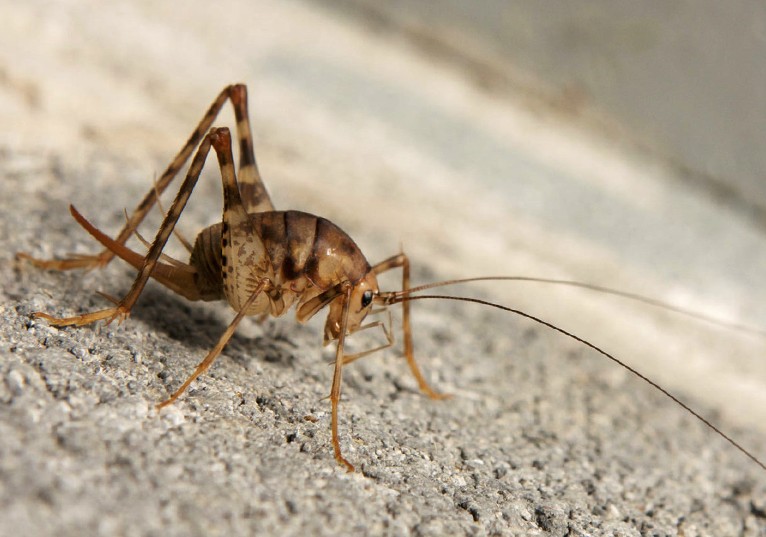
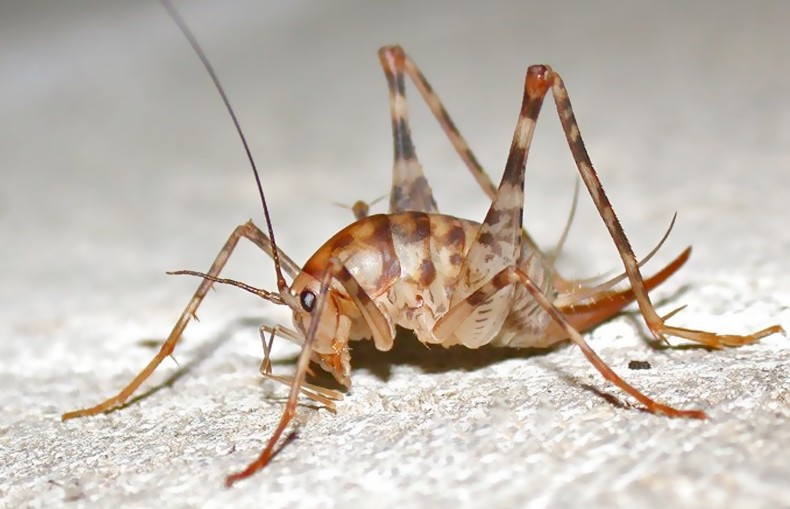
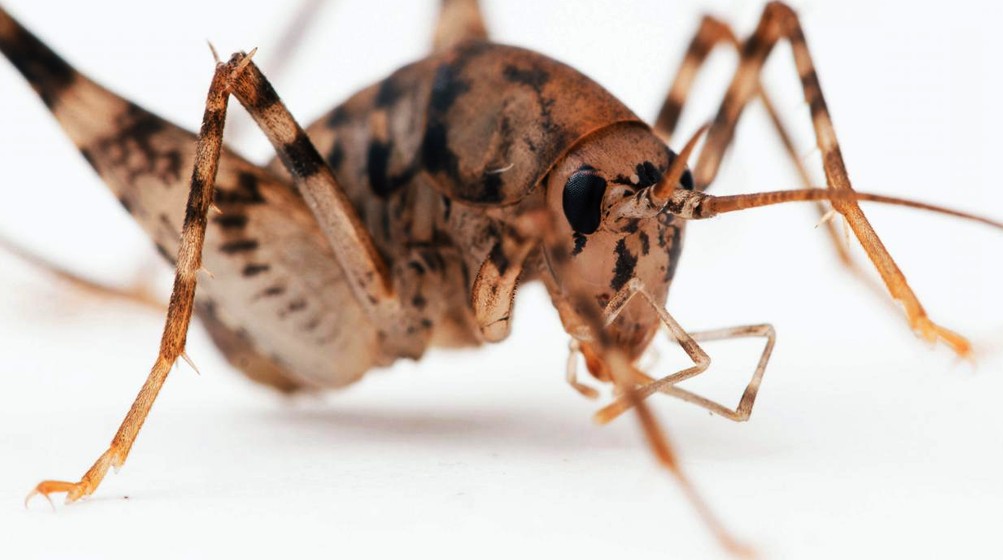
How to Get Rid of Camel Crickets from your House
Who wants to live in a house with camel crickets that look like spiders and has the power to jump on you. These are not the ordinary crickets that chirp in your backyard. Take a look at the ways you can get rid of the camel crickets.
Shoo them with lights
Camel Crickets love to live in the dark, moist, and damp places. That is the reason they choose your basement. Keep the lights of every dark corner in your house especially the bathrooms and basements on. It will annoy them beyond any doubt. This will drive them out of your house. Make them uncomfortable, and they will leave you alone.
Take care of the damp
You know that these ugly little crickets are in love with damp places. How about drying the entire place with a dehumidifier? This will make it impossible for them to live in your home.
Cover their entry points
Prevent them from entering your house. Seal every crack in your home. Go ahead and look for cracks and seal them. Use tightly fitting windows, doors, and screens. Camel crickets are accidental invaders. They enter your home because you left a place open. It is a well-known fact that they love to stay outside.
Water
Another thing that will annoy the camel crickets is water. In a spray-can, pour a solution of water and liquid soap. Spray it through the cracks and crevices. You can even replace the soap and water solution with insecticides sold in the market. These are not only powerful but will surely kill the camel crickets. Remember to look for an insecticide that can kill camel crickets otherwise it won’t be of much use.
Glue Traps
If you are not very sure about insecticides, then try something that is safe and harmless. Use a thick cardboard cutting and coat it with adhesive. Set this trap everywhere in your home.
Clean your basement
It is better to get rid of the crickets before they are born. Use a vacuum cleaner to clean the entire basement. The eggs and young camel crickets will be easily disposed off. Camel crickets love those places that aren’t inhabited frequently. Clean the area every other day to take care of this problem.
Try Molasses
Camel crickets love the smell of molasses. Place jars filled with molasses around your basement. This will attract the camel crickets and they will dive into the container which will result in their death.
The benefits of different types of oil
There are few home remedies that will prove highly beneficial.
- Use cedar oil. You can use cedar oil to attract the camel crickets. The smell of this oil will suffice the camel cricket and they will die.
- Try neem oil. This powerful oil can kill every insect at any stage of their life. The camel crickets will stop functioning and their hormonal system will fail. This will prevent them from eating, laying eggs, mating, and eventually they will die.
- Mix some white vinegar with peppermint oil. This will help to take care of the camel crickets.
Facts
Some interesting facts about camel crickets:
- The camel crickets that are found in the USA are light brown in color. They also have dark streaks all over their body.
- The young camel crickets have translucent bodies.
- Camel crickets have antennae which are twice their size. This will serve two purposes – one to defend themselves and the other as tactile sense.
Now, you know almost everything about these spider-like crickets. Defend your homes from their invasion by following the ways we suggested.
